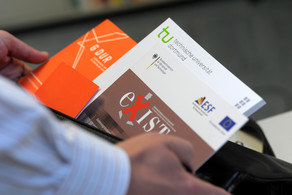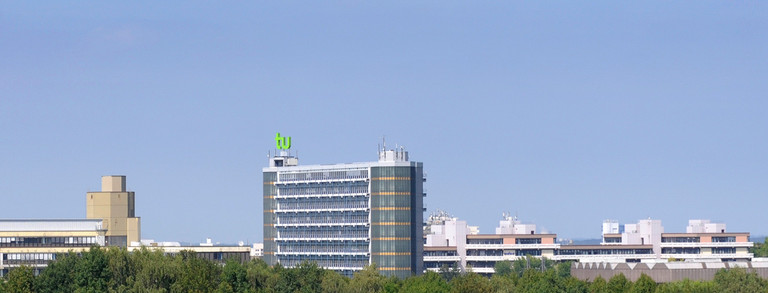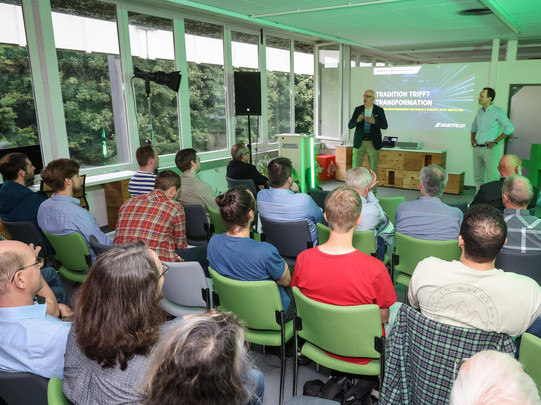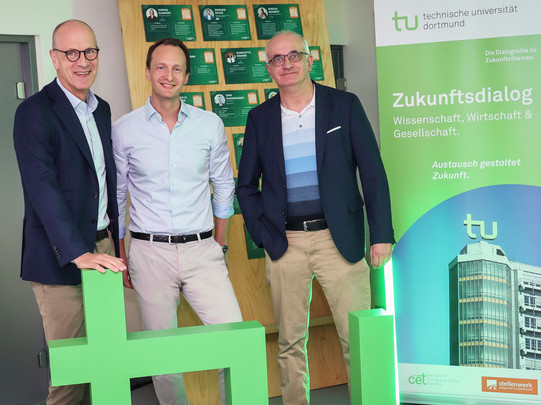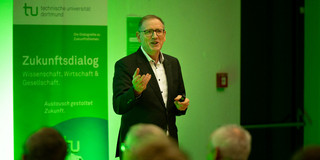9th Future Dialog Showcases the Co-Shaping of Digitalization in SMEs
- Founding & Transfer
- Top News
- Campus & Culture

MURTFELDT, a family business with its headquarters in Dortmund, is a supplier of technical materials. 700 staff members at six manufacturing facilities across Europe produce high-performance plastics, standardized and customized components, and semi-finished products for tens of thousands of customers worldwide. Robert Höhner, who is running the company in the fourth generation, has positioned it as “an expert in a niche market” and wants to lead it into an increasingly digital future. He explained to an audience of around 50 guests why his company needs further digitalization, what potential this opens up and which challenges he and his team have already overcome along the way.
Like in many sectors, digital platforms, which make it possible to handle customer enquiries extremely quickly, easily and automatically, have also established themselves in contract manufacturing in the past years. In addition, a new generation of customers increasingly expects manufacturers to have digital distribution channels. That is why MURTFELDT’s management decided to set up a new online shop, where customers can automatically obtain quotes and place orders for a wide variety of standardized prefabricated parts. “We can offer up to 90% of our products via the new shop,” says Höhner. “For individual components or special projects that we develop and undertake together with our customers, we naturally still have our direct distribution channel in place.” Apart from which, nowhere near all of MURTFELDT’s customers want to order online, meaning that the company will continue to offer one-to-one contact as well as personal advice and support—and has no plans to make any cutbacks in sales staff.
On the way to a highly integrated system
To develop the new shop with the desired functionalities, it was necessary first of all to open up MURTFELDT’s closed internal system to customers. Cleaning up and amalgamating the central IT system with its many isolated solutions and interrupted data flows to the point where the shop was ready to go took over a year. At the same time, however, Höhner said that the shop is just one of several large digitalization projects: “Our ultimate vision is a highly integrated system that reduces complexity, is scalable, facilitates full data transparency and offers a fully automated digital customer interface.”
Bringing staff on board was important to the company’s management from the outset. Höhner said: “In this respect, we benefit enormously from the trust our employees have in us. Many have been with us for decades and many have contributed to our digitalization projects with a great sense of responsibility and their respective expertise.” Developing the shop involved, for example, pricing, delivery times and shipping and packaging costs, which can now be calculated automatically. In the process, the management team has learned, according to Höhner, that a mix of large, centrally coordinated projects and smaller, rapid successes is a promising way to motivate people. For example, the MURTFELDT team has developed its own chatbot for customers and “fed” it with its extensive knowledge of materials. Another major project alongside the shop is automated small-batch production.
Guests made good use of the opportunity during Höhner’s talk to ask questions and actively contribute to the discussion. Drinks and snacks afterwards provided an additional framework for sharing ideas.
Contact for queries:


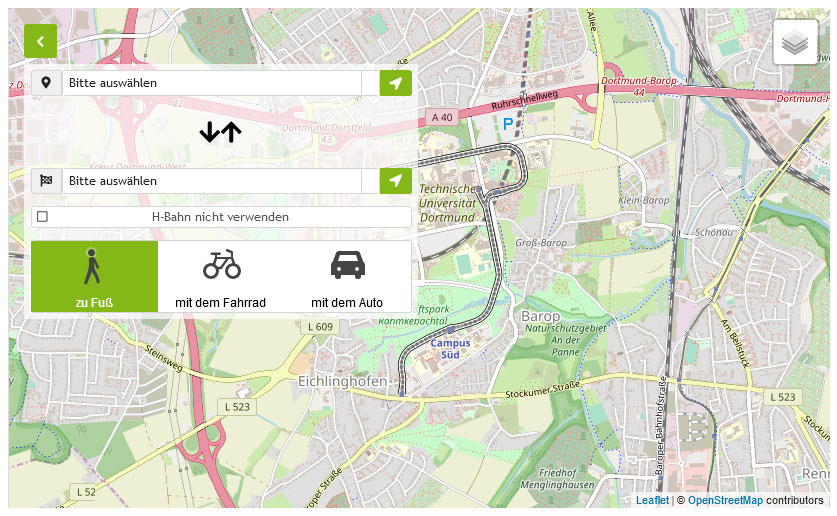

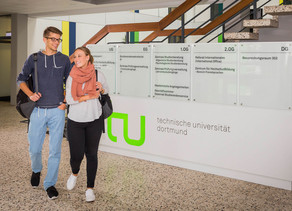
![[Translate to English:] Partner Four hands are holding the green logo of TU Dortmund University](/storages/tu_website/_processed_/1/d/csm_Partner_Nicole_Rechmann_KW_670eba0154.jpg)



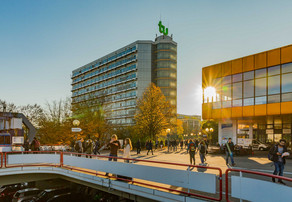
![[Translate to English:] Forschung An apparatus with tubes in a laboratory](/storages/tu_website/_processed_/0/c/csm_Forschung_Juergen_Huhn_4fa3153b51.jpg)
![[Translate to English:] Studium Five students are sitting in a lecture hall. They are talking to each other.](/storages/tu_website/_processed_/c/9/csm_Studium_FelixSchmale_dbdbfb0dd7.jpg)
